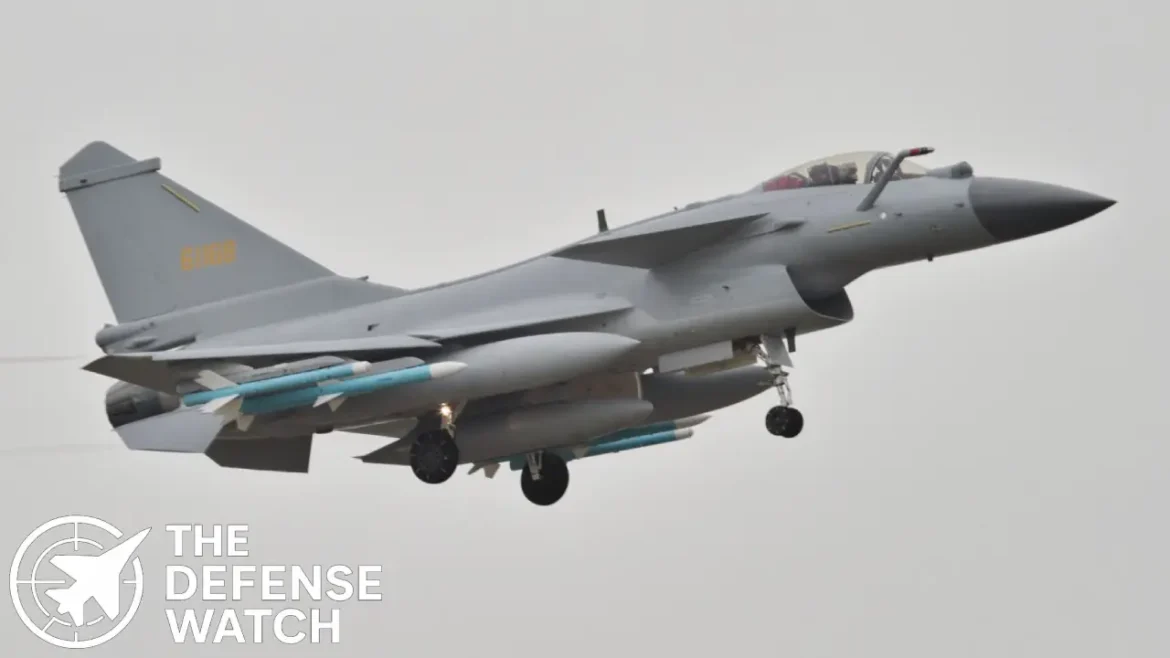The Rise of the “Vigorous Dragon”
China’s Chengdu J-10C, known by its poetic moniker “Vigorous Dragon,” has emerged as a symbol of the nation’s maturation in advanced fighter design. First introduced between 2015 and 2018, the J-10C fighter jet represents a confident leap into 4.5-generation multirole capability with substantive deployments in recent air skirmishes.
Cutting-Edge Avionics and Engine Independence
At the heart of the J-10C’s potency lies its advanced AESA radar, capable of long-range multi-target tracking and integration with an enhanced helmet-mounted sight and Multifunction Displays (MFDs). Combined with its sleek delta-wing and canard design, fly-by-wire controls, and Mach 1.8 top speed, the aircraft provides formidable maneuverability and situational awareness.
Crucially, J-10C fighter jet variants have largely transitioned from Russian AL-31FN engines to domestically produced Shenyang WS-10B, marking China’s growing aerospace autonomy.
Lethal Weaponry: PL-15 and Versatility
On its 11 external hardpoints, the J-10C fighter jet can carry up to 7,000 kg of ordnance—including PL-10 short-range and PL-15 beyond-visual-range (BVR) air-to-air missiles. The PL-15 boasts a striking range of 200–300 km, outstripping the U.S. AIM-120D AMRAAM.
Beyond aerial combat, the platform is also configured for precision strike missions—with options ranging from laser-guided bombs to KD-88 air-to-surface and YJ series anti-ship/anti-radiation missiles.
Combat Debut: Claiming Victories and Stirring Headlines
The J-10C first drew global attention during a recent India-Pakistan skirmish. Reports suggest that Pakistan deployed J-10Cs equipped with PL-15 missiles and succeeded in downing Indian Rafale fighters—marking the jet’s combat initiation and a symbolic win for Chinese aerospace.
These events propelled Chengdu Aircraft’s stock by over 30–40 %, illustrating the impact of battlefield performance on defense markets. While independent verification remains limited, the incident offered China a credible validation of its export-worthy combat capabilities.
Strategic Impact: A Global Challenger Emerges
The J-10C’s blend of AESA radar, long-range BVR armament, and lower price tag (~$40–60 m) has opened new markets. Countries in South Asia, the Middle East, Africa, and Latin America—from Egypt and Bangladesh to Venezuela and potentially Iran—are seriously considering or finalizing deals.
In particular, Venezuela’s pending interest signals a rare Chinese foray into the Americas—a move seen as a direct challenge to established U.S. air dominance in its Western Hemisphere backyard.
Context & Analysis
Strategic Context
The J-10C’s international emergence aligns with China’s broader defense-industrial shift—from license-building to innovation, export posture, and strategic autonomy. Powerful radar, long-range missiles, and export policies without restrictive U.S. end-use terms make it a formidable rival to Western jets.
Operational Caveats
Despite its strengths, the J-10C remains a single-engine platform—lacking redundancy offered by twin-engine designs. Its global support infrastructure remains nascent, and sustained logistics across diverse climates is yet unproven. Wester analysts also caution that victory claims in South Asia are politically charged and not fully corroborated.
FAQs
It combines AESA radar, PL-15 BVR missiles, modern avionics, and indigenous WS-10B engines—marking a significant evolution over earlier J-10 models.
With an estimated 200–300 km range, the PL-15 outperforms U.S. AIM-120D and European Meteor missiles, giving the J-10C a key edge in long-range engagements.
Pakistan and Egypt have confirmed orders, while Bangladesh, Venezuela, Iran, and others have shown interest, enticed by capability-to-cost advantages and fewer political constraints.
Yes—its combat debut reports and advanced systems suggest it can match or even surpass these Western aircraft under certain conditions.
As a new export, long-term reliability, sustainment infrastructure, and single-engine survivability remain concerns, along with limited independent combat validation.


1 comment
[…] unit prices to under $80 million for the F-35A. It has become the backbone of U.S. and allied air power, with over 20 partner nations and customers […]